Gear Comparison: Osprey Exos 58 Previous Gen vs 2018 Updated Model
- Reach Your Summit
- Jan 29, 2018
- 5 min read

This Spring Osprey is releasing an updated version of their popular Exos pack. A favorite among the ultralight and thru-hiking communities. For this year, there is also a women's specific version of the lightweight pack called the Eja (pronounced Asia).
I've been using the previous generation of the Exos 58 for many trips and thru-hikes and love it. So when I set my eyes on the new release I had to check it out. In this post, I'll be going over the differences and similarities between the past model and the current model that should be on shelves soon if not already.
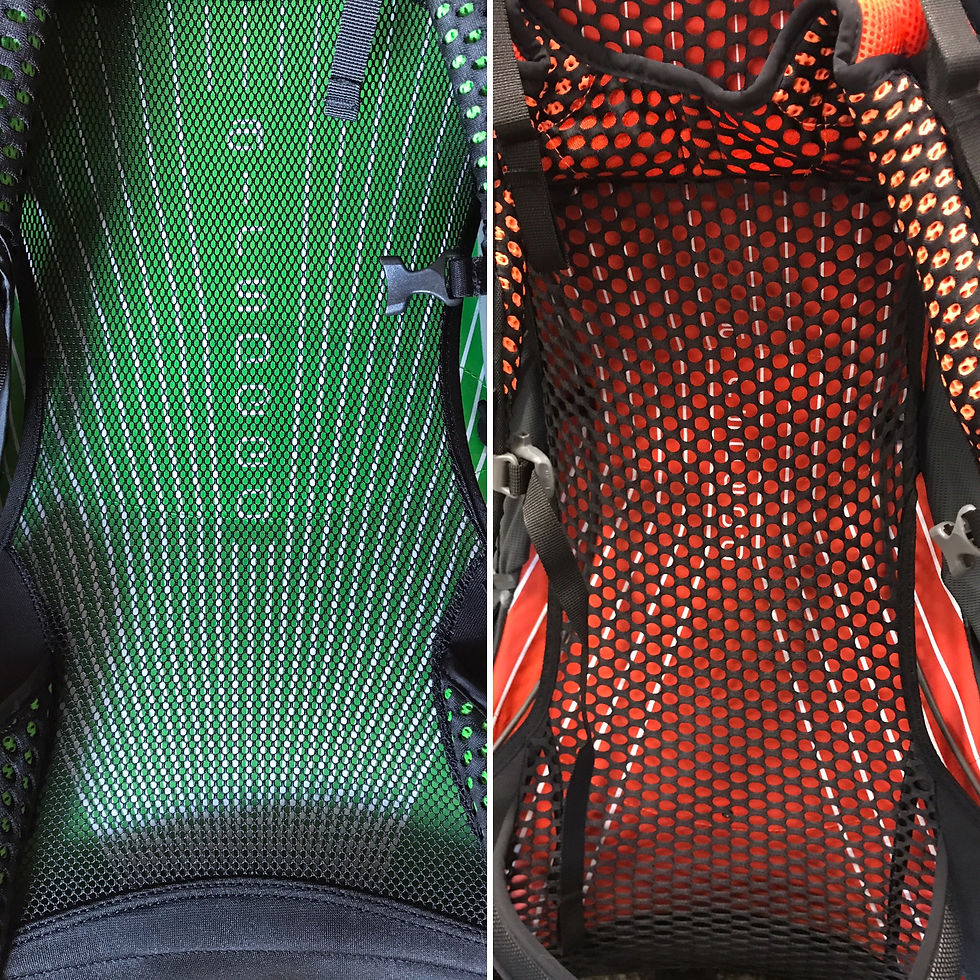
The first update noticed is the change in the pack's suspension. The mesh in the older model offered me decent ventilation on hot days. It helps carry the load very well and also transfers it comfortably to the hipbelt. The mesh did feel a little stiff though almost like a trampoline and less air permeable. A small price to pay for what it is designed to do, while remaining durable for heavy pack loads.
For 2018, the mesh panel on the back is softer, more breathable and seemingly more durable than its predecessor. Though I have never had any issues with the mesh deteriorating at all in the previous generation. With a softer feel and 20-25 lbs of weight inside, the new pack wrapped around my waist and back comfortably. I have always found Osprey's patented AirSpeed design to take the cake in the older version so the improvements came as a welcome surprise.
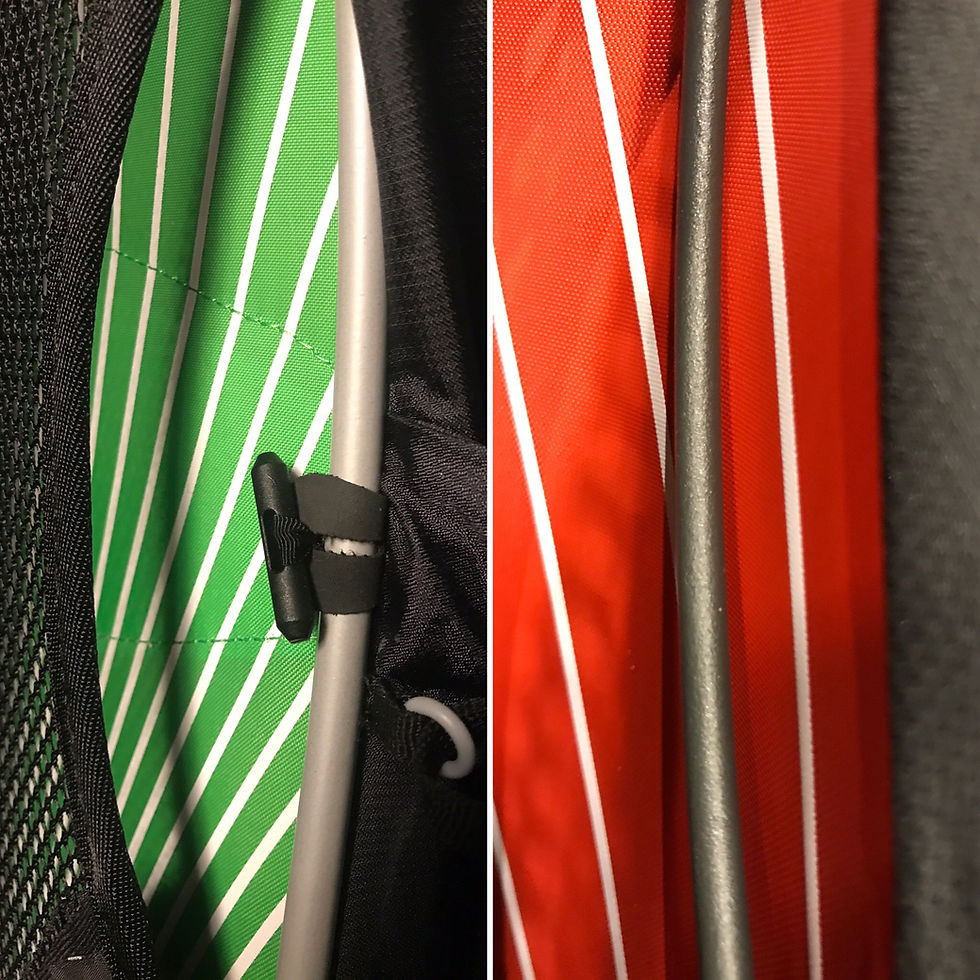
A 6065 aluminum alloy peripheral frame in the previous model has never given me any trouble carrying 20-25 lb weight loads on long trips, but once I pushed 30 lbs the weight it felt like the pack was beginning to push its limit. For 2018, the Exos now uses a 4mm (Lightwire) alloy frame. The load range for this new frame is between 20-40 lbs according to Osprey's specs. While I haven't pushed to 40, I can say it still works similarly to the previous design.
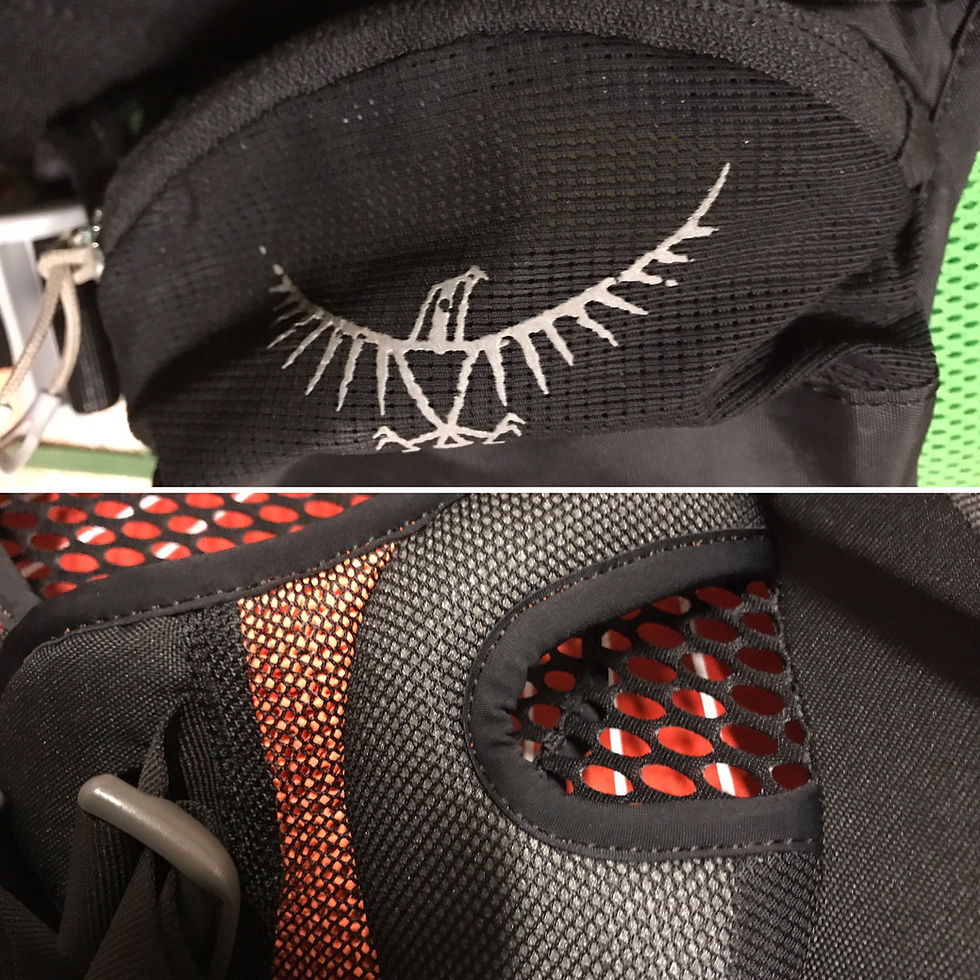
A feature that may be missed by many hikers are hipbelt pockets. The updated design is well padded for support and comfort, but there are no hipbelt pockets. This used to be an issue for me, but with time I have found this wouldn't make or break a decision for me. With the removal of the hipbelt pockets the belt and padding can move more naturally. This is due in part to the cutout in the padding itself. That cutout helps reduce rubbing and chafing from friction too. While this is something I have never personally experienced with the older Exos, I have heard from others of it happening to them out on the trail. Hipbelt movement wasn't completely restrictive with the old Exos, but it certainly feels improved with the updated version.
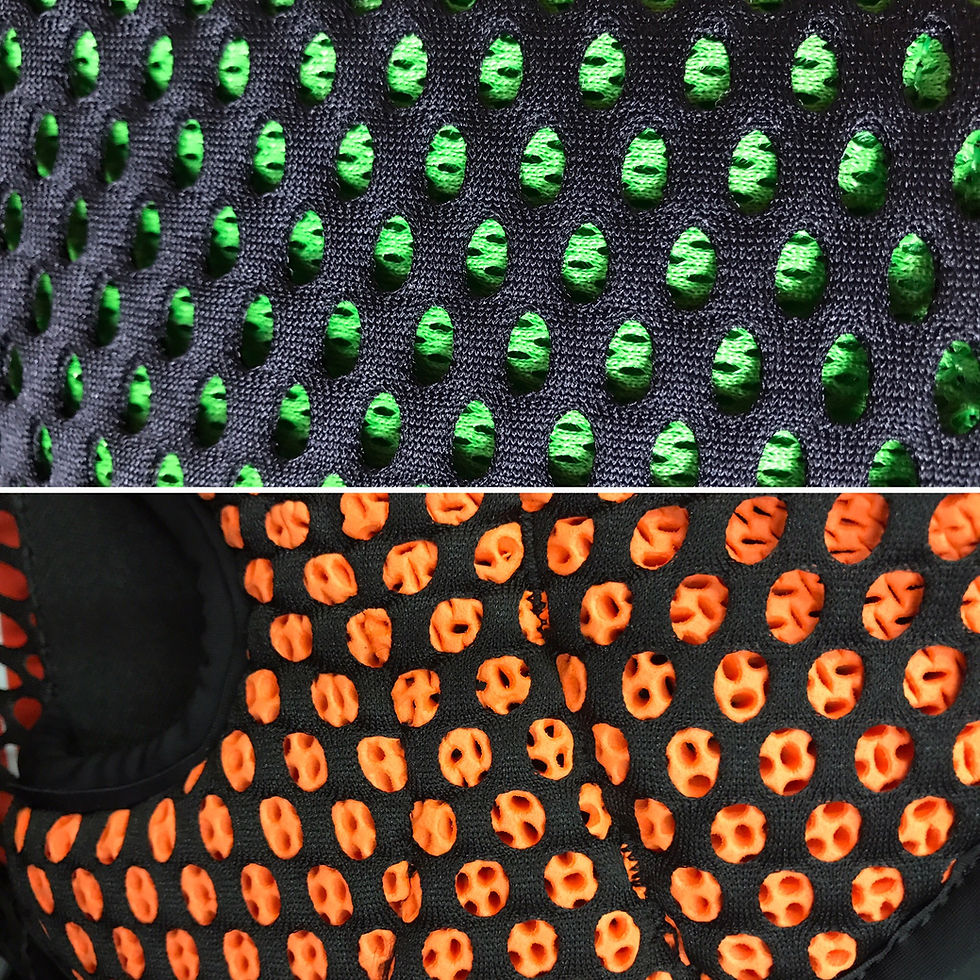
Hipbelt and shoulder strap mesh between the two are a little different. While both are seamless and layered, the internal mesh for the 2018 model feels like a lightweight foam taken from an athletic shoe. It also appears to be a bit more breathable with bigger holes (and more of them) throughout the mesh than the previous version (see above).
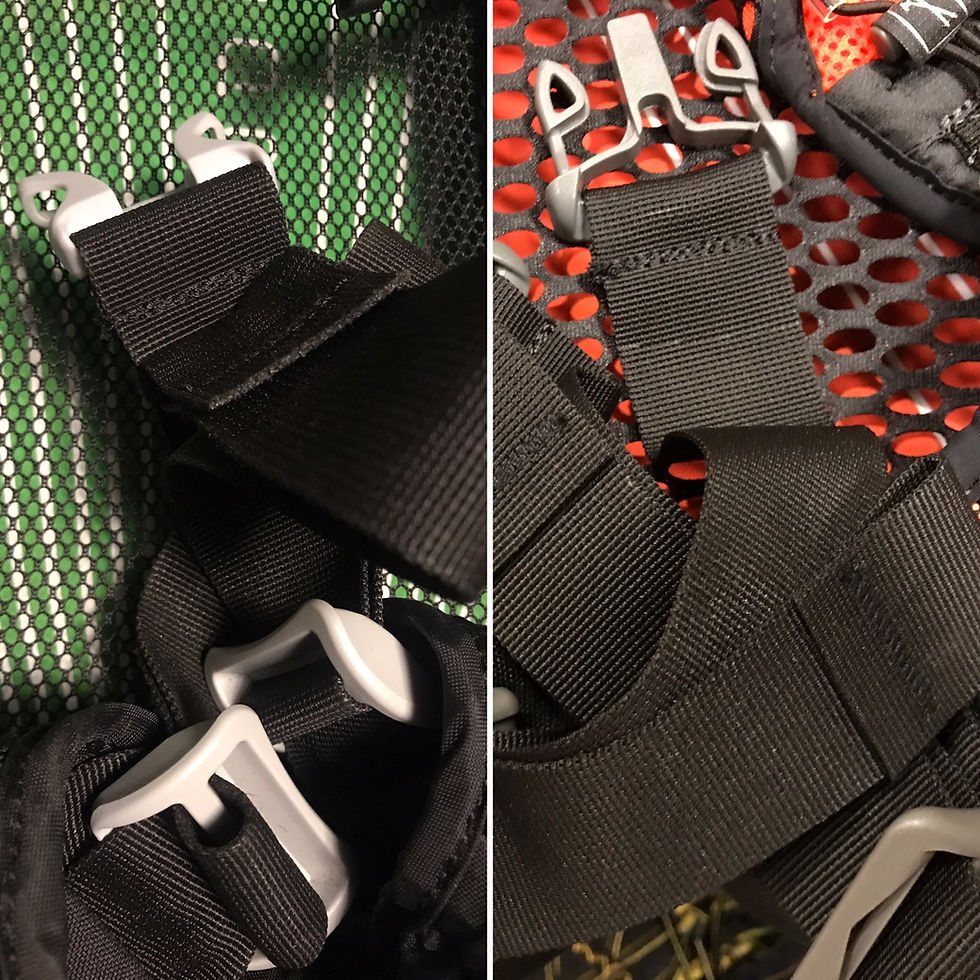
The hipbelt on the newer generation is also adjustable with a generous amount of nylon webbing. The previous pack had the webbing trimmed down to a minimum and sewn to create a loop for fast adjustments. I personally never had any trouble adjusting the hipbelt of the older Exos and I prefer to not have the extra strap, but I can see this being very beneficial for someone fitting the torso range of a specific size and hoping for a finer tuned adjustment on the hips.
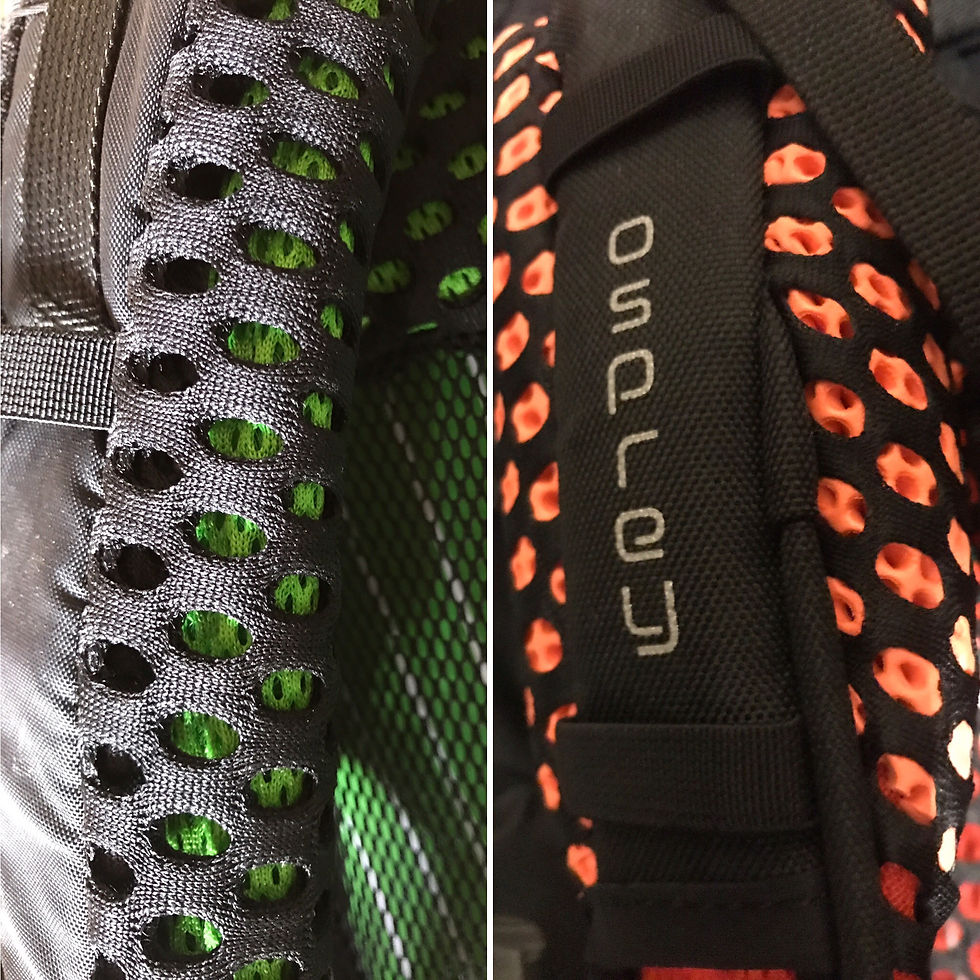
Extra cushioning in key contact points, such as the shoulder straps (see above), provide comfort when carrying heavier weight. The cushioning utilizes the same mesh used in the hipbelt. A couple of other slight alterations in the straps between the two include:
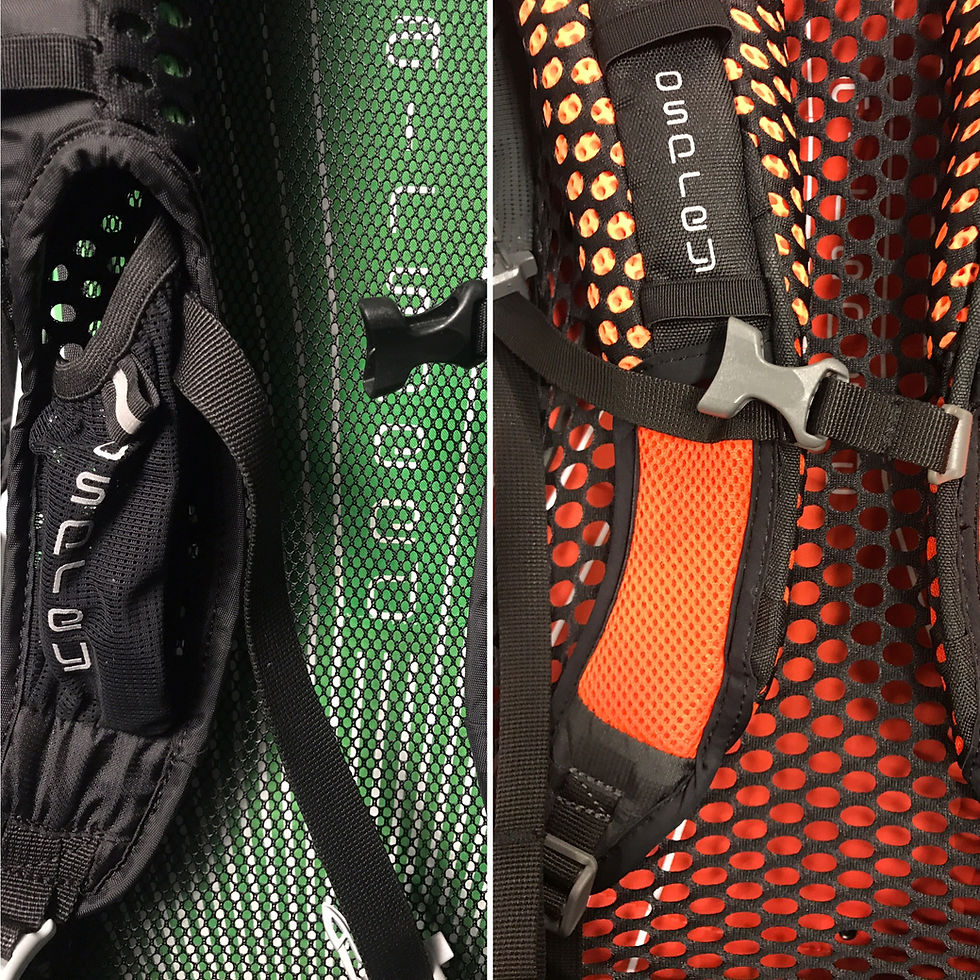
A small stretchy mesh snack pocket on the previous version and no pocket in the updated model.
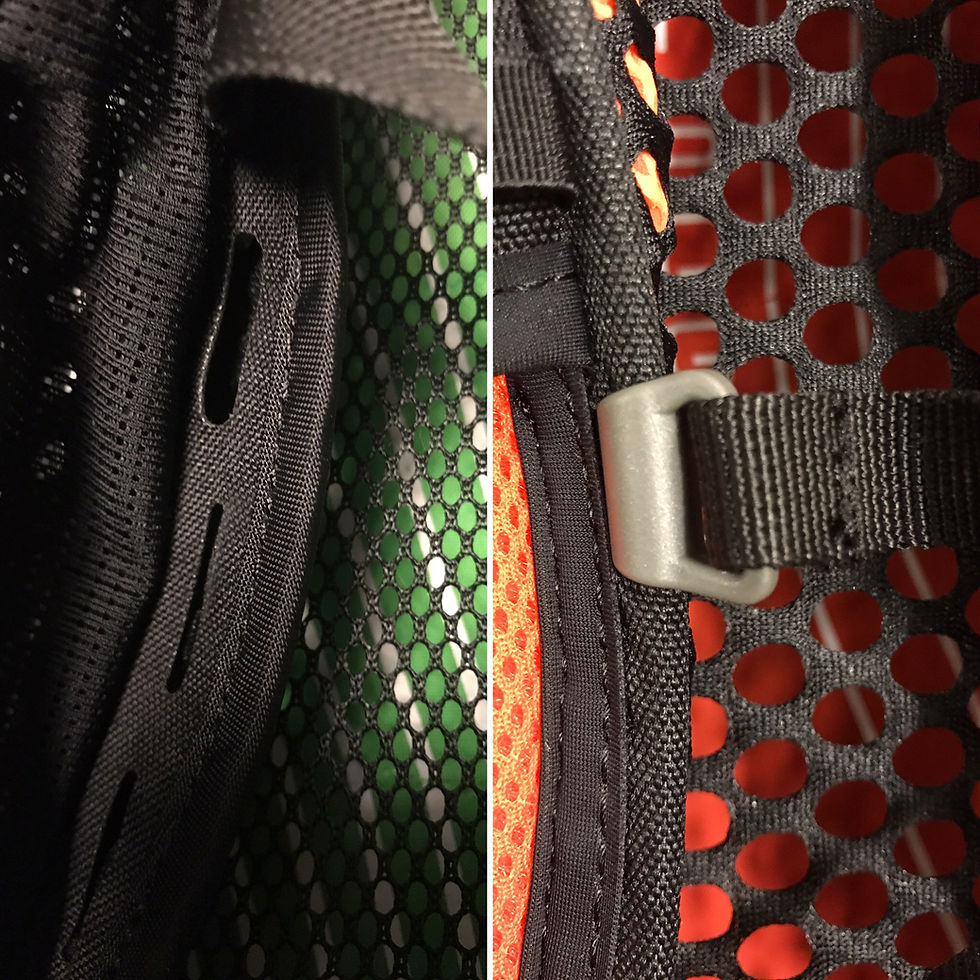
Also sternum strap adjustment on the current model uses a vertical slider while the older version has eyelets for setting the strap where you prefer.
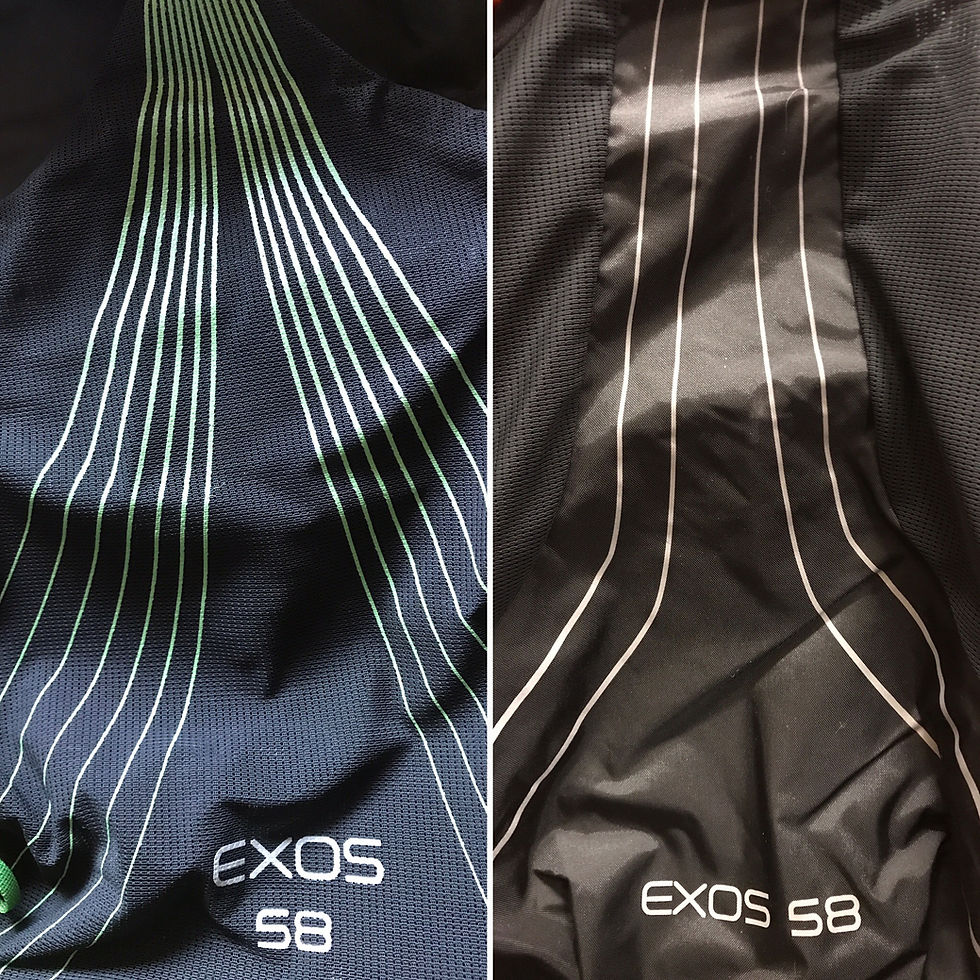
This year's beefed up version features a 100d nylon for the pack body and a 210d nylon for more abrasion resistance in areas such as the bottom of the pack, the front shove-it pocket (pictured above, right frame) and the side bottle pockets (pictured below, lower frame). The previous model uses a 100d nylon for the body as well as the bottom of the pack. The shove-it pocket (pictured above) has always been a feature I enjoyed and look for frequently in a pack. The ability to stash quick access items and soaking wet gear is what I use this pocket for if needed. This is definitely a personal preference.
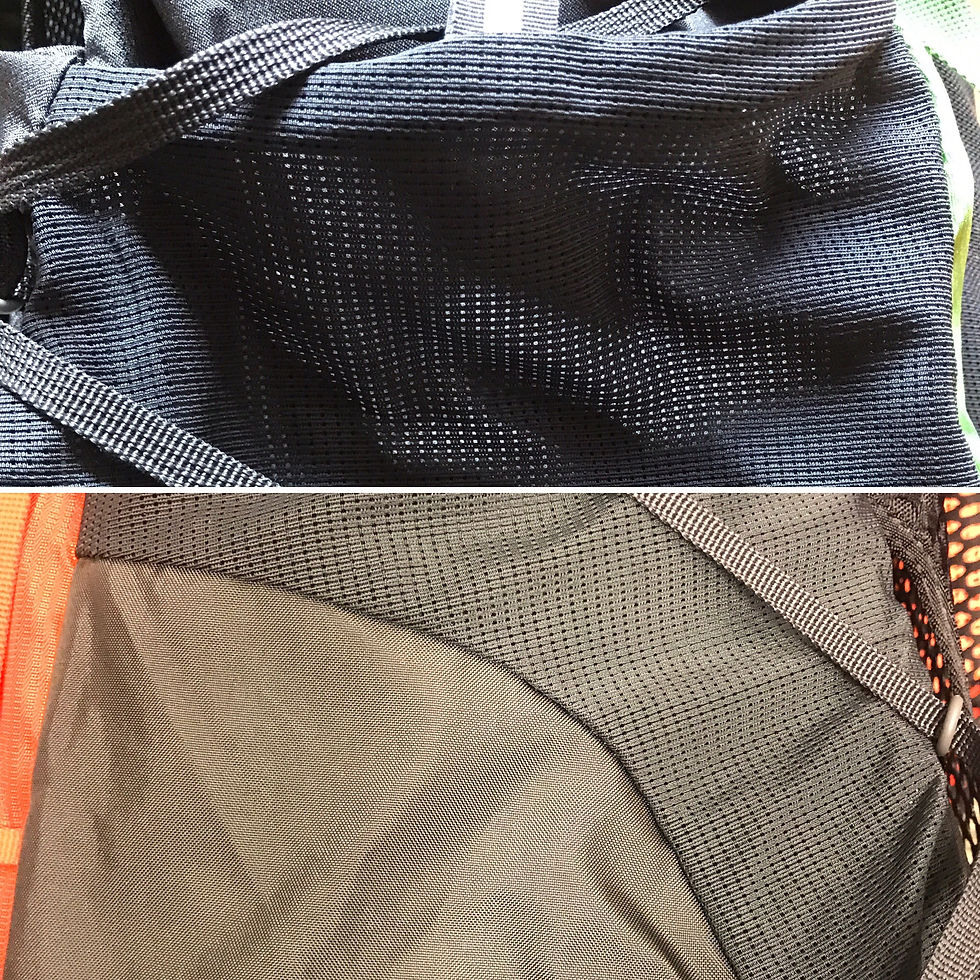
Though I haven't had any issues with the mesh of my pack tearing, I have heard of and seen this happen to a few hikers. These nylon reinforced areas will add a little weight, but should be an acceptable trade-off and will help in not having to baby the pack as much.
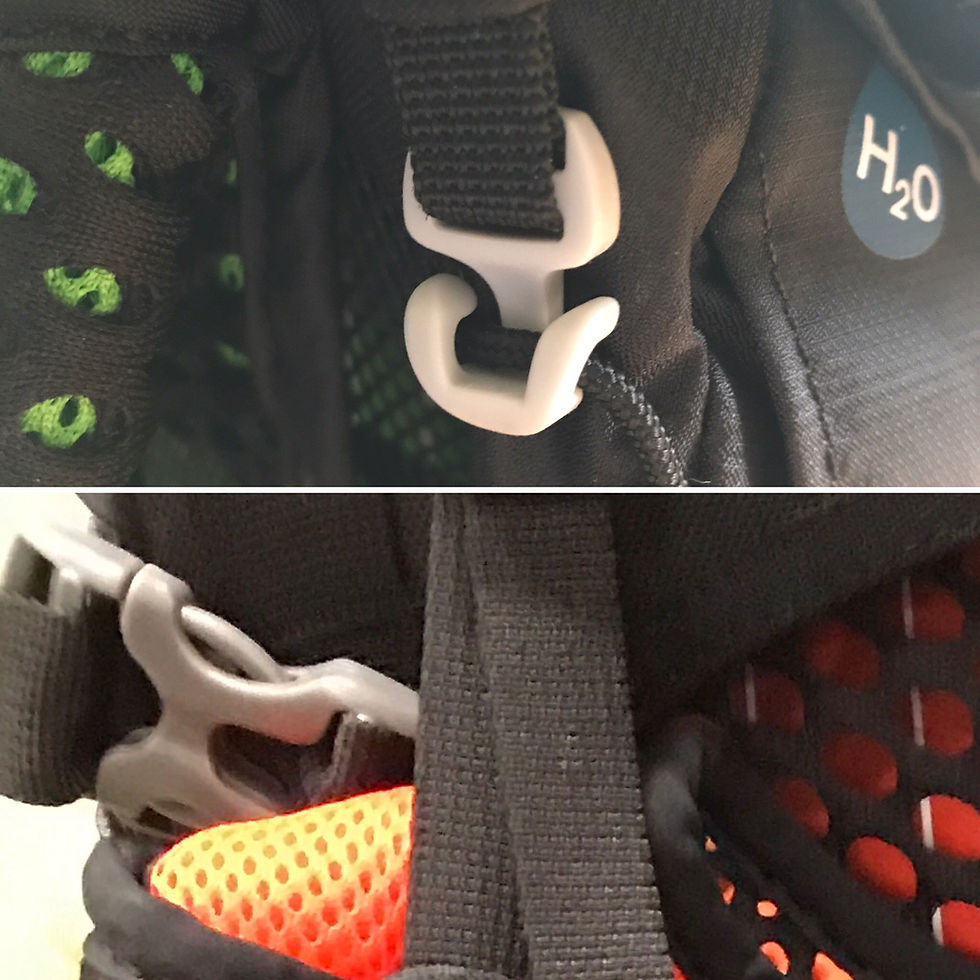
Another redesign for this year is with the removable top lid. Clips are now replaced with 5/8" buckles and 15mm nylon webbing. I feel the design with this falls a little short. Sure the buckles are easy to attach and detach, but they are also slightly different sizes from the buckles opposite of them that one would snap to close the pack up. The option to turn this into a summit pack a bit easier than the previous model would have been a nice feature. I have had to get a little creative at converting the lid into a summit pack with last generation's design. Though this wouldn't make or break my decision either.
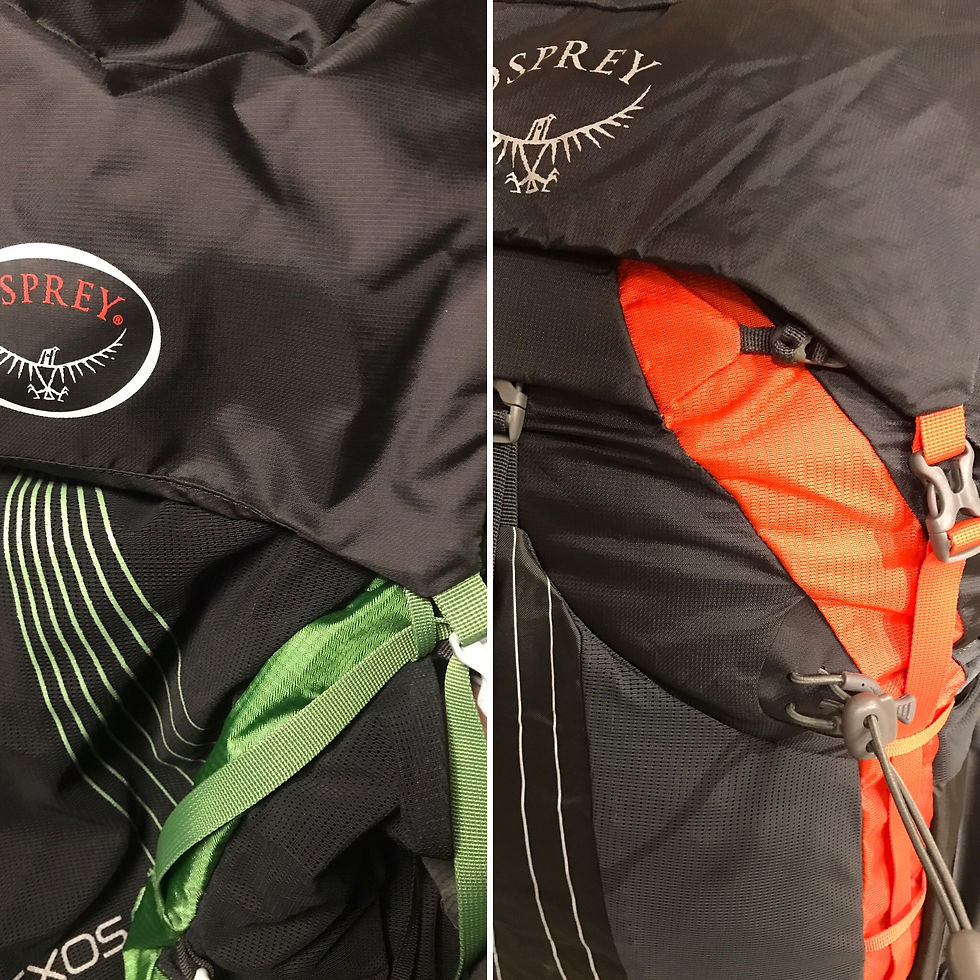
Osprey has also kept their proprietary integrated Flapjacket for the updated version which helps protect packed gear. If you're looking to shave ounces you can also completely disregard the lid which will lower the pack weight by about 4.2 ounces. This is a design characteristic I have enjoyed and is also part of my reasoning for not being too bothered with an easier summit pack option. On most trips, I will just leave the pocketed top lid at home and use the Flapjacket.
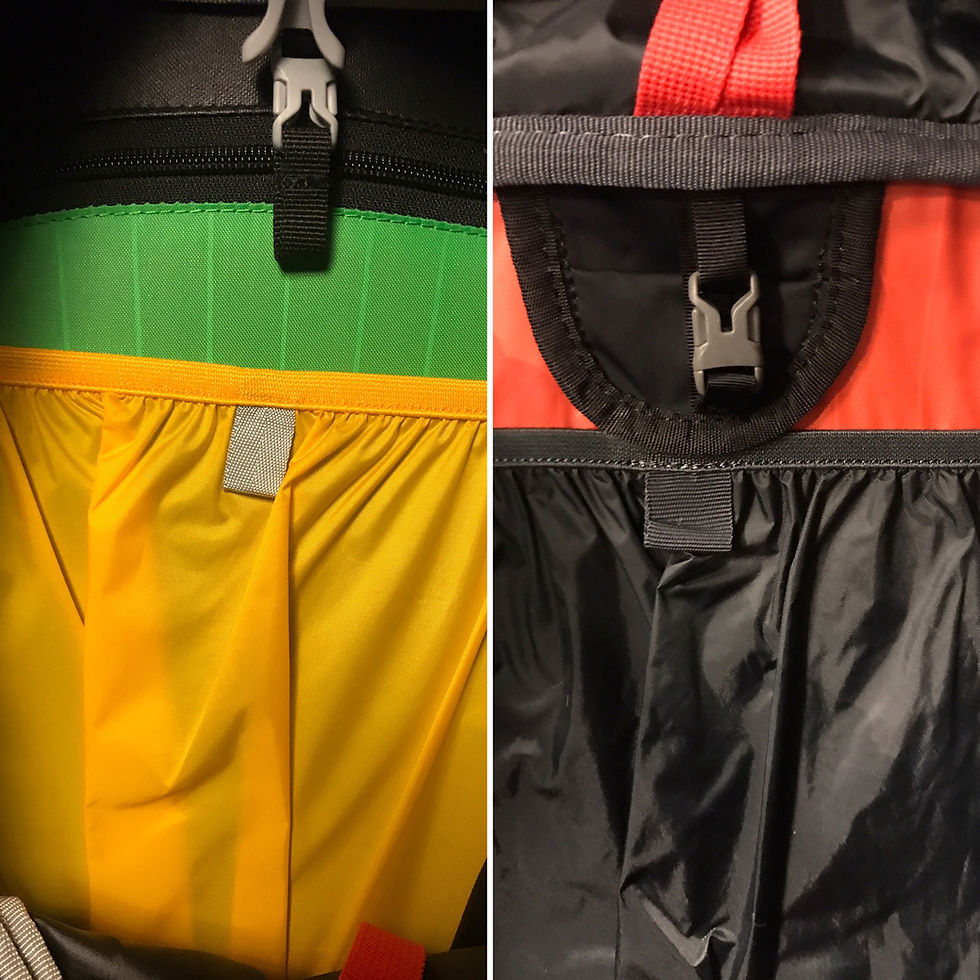
The option for a hydration reservoir is available with both models. The hydration port for the hose exits the pack on the side of its body in the previous model, while it exits directly through the back of the pack in the current edition.
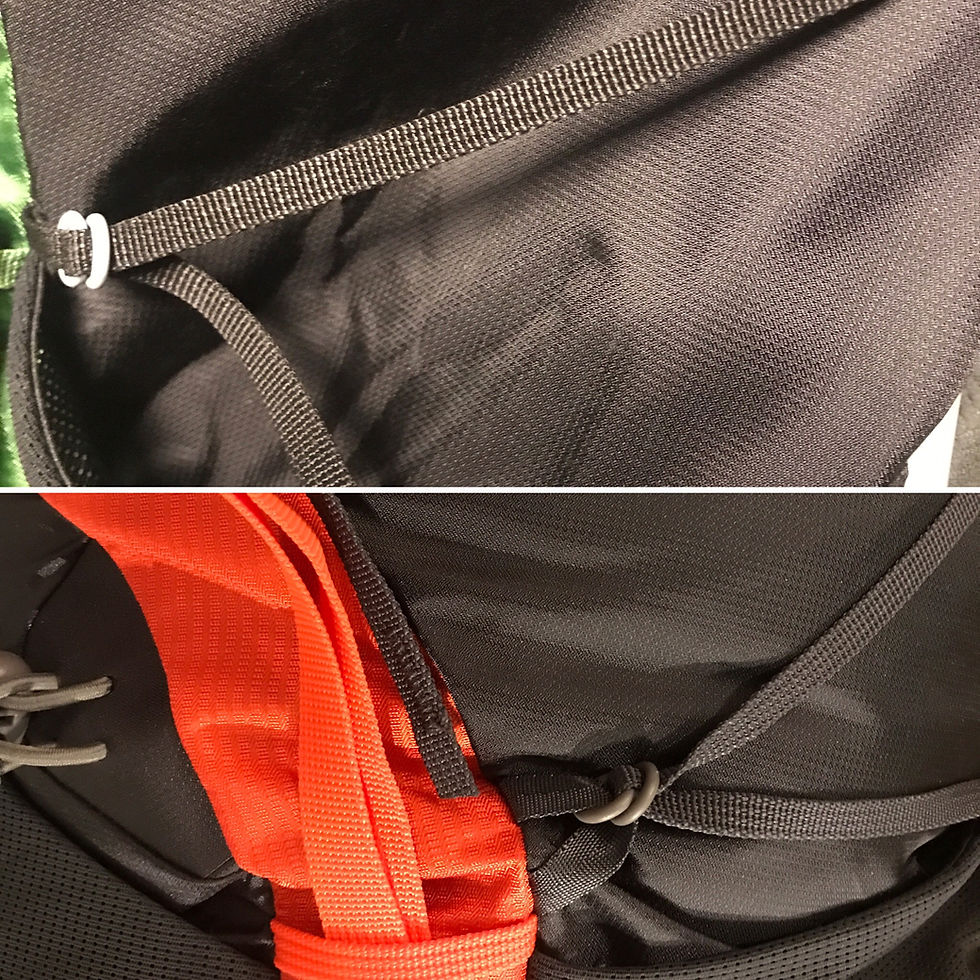
Z-style compression straps remain the same and allow for the ability to remove completely or be altered if desired.
If you're looking for a solid lightweight pack or are new to the lightweight community, the Exos is a great option to consider without breaking the bank. It's a great pack for beginning backpackers and veterans alike. It is available in 38, 48 & 58 liter sizes, and with the new upgrades the pack will weigh a couple of ounces more than its predecessor. While it may not seem necessary to pick up the updated version if you already own the previous model, it is still worth taking a look at. Depending on your needs and trips, it could also possibly sway your decision. For me, I'm eagerly awaiting the lighter and slightly less robust Levity.
Osprey Exos 58 - $164.99 ($220 orig.)
Med, 2 lbs 8 oz (2 lbs 4 oz without lid)
Osprey Exos 58 (2018) - $220
Med, 2 lbs 10 oz (2 lbs 6 oz without lid)
